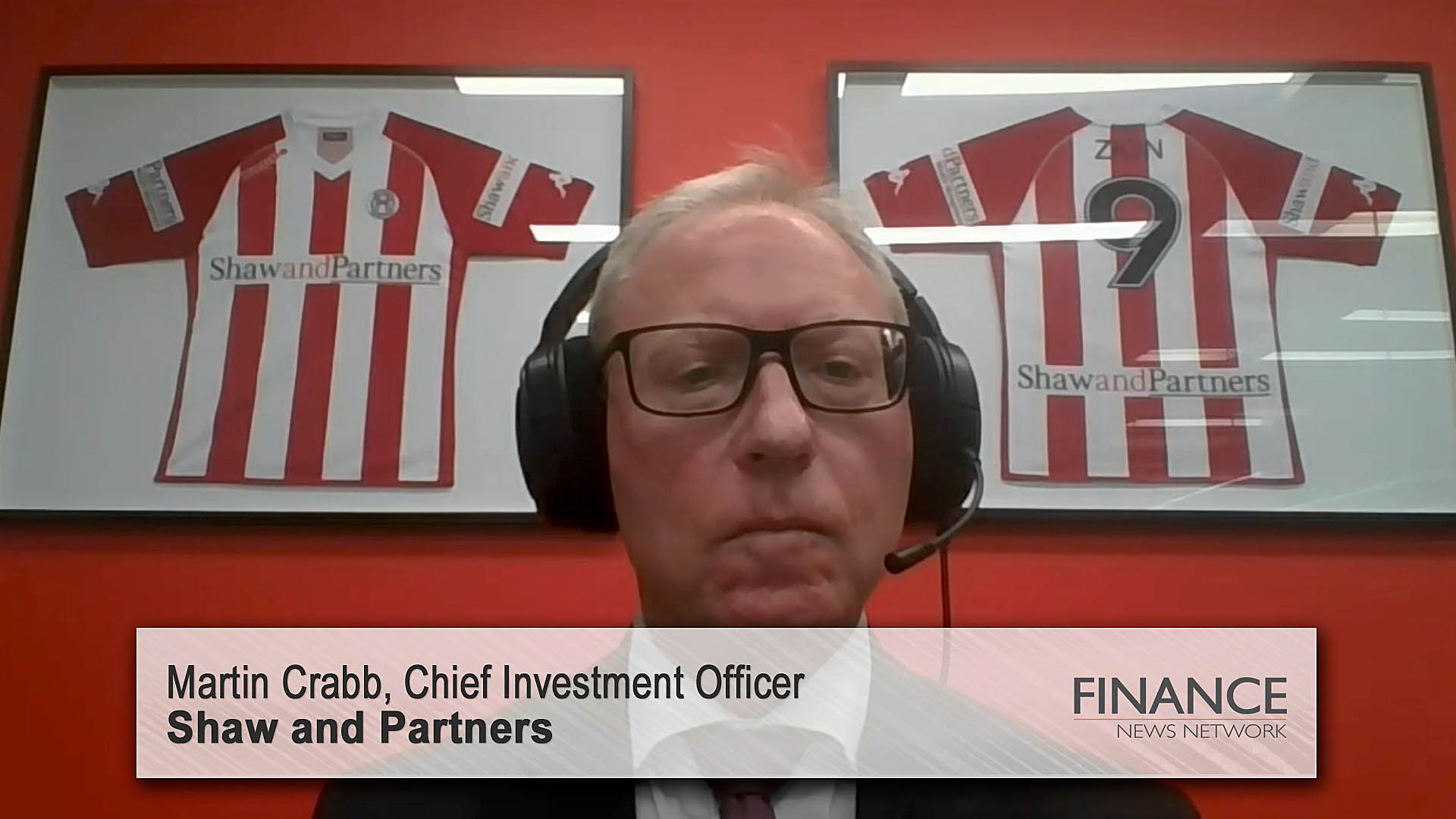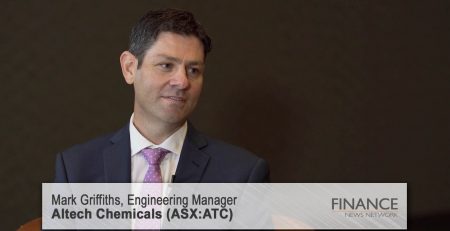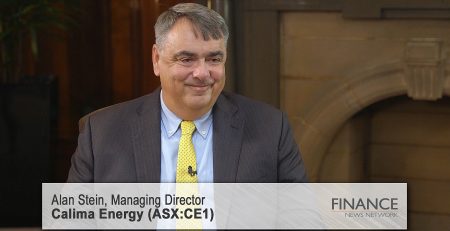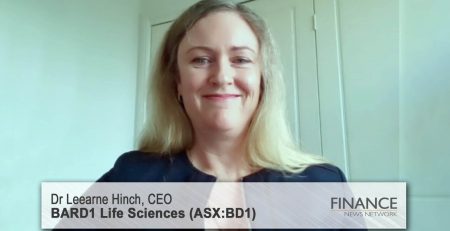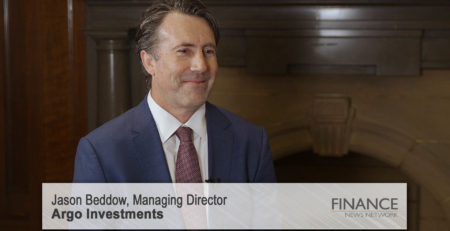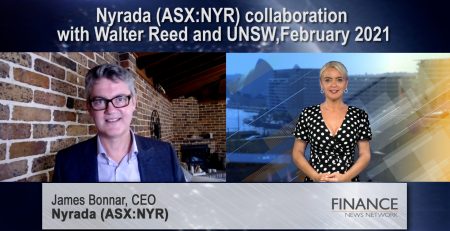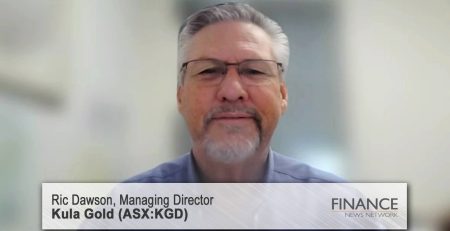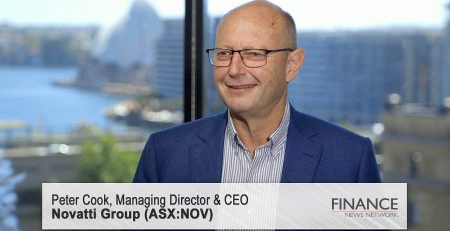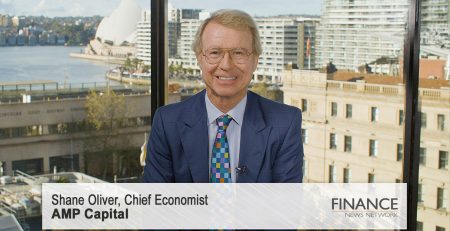Market update with Shaw and Partners, September 2020
Shaw and Partners Chief Investment Officer Martin Crabb discusses signs of market recovery, government support, coronavirus vaccines and small cap performance.
Good afternoon or good morning, depending on where you're watching. So, we've been the event partner with Finance News Network and these investor events for a couple of years now. So it's always a great pleasure to come along and talk to some people about our views on the market. Shaw and Partners is celebrating the five years of its foundation today. So I thought we'd give that a little bit of a plug. We're very busy raising lots of money for charities this week. We're hoping to raise half a million dollars in our fifth anniversary. So, some good work going on here.
Let me talk about the markets. Let me start off by saying clearly the markets are recovering, or the economy is recovering. So we know that because there's now quite a lot of high-frequency data that we're looking at that suggests that activity is starting to pick up. So, if you look at things like Google Mobility Data, which looks at what people are doing, what they're searching for, what their activities are, that's clearly showing a recovery in Australia, ex Victoria, but even in Victoria, there's a pickup from a lower base in activity. If we look at things like commercial airline flights, they're picking up. If we look at restaurant bookings, they're picking up. So, lots of high-frequency data suggesting that the economies are opening up around the world and economies are recovering. So that's very good news for markets, very good news for governments, because it does suggest that they can start weaning people off the significant amount of social welfare support that's been provided.
The second part of that is that government backstop has been very powerful. Most countries have measures in place to support either employees or employers through this difficult period. And most countries have extended those programs. Obviously, the US is a little bit of a different case because that's locked in a fight between the Republicans and the Democrats in terms of their funding package. But countries like Germany, for example, have extended their version of JobKeeper until the end of next year. So governments have been very, very supportive, and they've taken a lot of the economic risk off the table. The labour force data that was out last week suggested that about half the jobs in Australia that were lost in the first downturn have been regained. So again, that's a very positive sign that the economy is recovering. So we've got a recovering economy, we've got fiscal support. So we've got governments that are not shy of running big debts and deficits. We can worry about them later.
And then the final part of that's monetary policy. So we had Guy Debelle from the Reserve Bank talk this morning about, and echoing what the Reserve Bank has said in their minutes, that accommodation is in place. And they're always looking at ways to extend that. The Bank of England is looking with their regulator to see if they can go negative on rates. So not only is the accommodation there, the language from the central banks are, “We'll do more if we need to.” So again, between that and the fiscal stimulus, it has removed a lot of financial risk from the market. So we've seen things like equity volatility come down from 80 to 25. We've seen things like corporate debt spread, so the extra amount that a corporate has to pay for debt over and above a government, they spiked in March and April. And they've come back right down to almost normal levels.
We're seeing lots of companies go to the debt markets and lots of companies come to the equity markets raising capital. So, unlike the GFC, where credit froze and really exacerbated the downturn, now we've got functional, open, liquid capital markets. So those companies that do need to raise capital, and a good example was Scentre Group (ASX:SCG), the shopping centre operator, they raised US$3 billion in subordinated debt or hybrid debt, at round about that high 4 per cent to low 5 per cent interest, which is obviously a lot cheaper than raising equity for those guys.
So we've got a market if you like, even though it's got lots of risk in it, that's sort of backstopped by significant levels of government and central bank support. So that isn't leading to an elevated PE ratio, because one of the key issues around the PE ratio is how much risk do you want to put into equities? And with that backstop of governments and central bank support, you can be a little bit more secure in your equities than you would do normally when you have unemployment and economic downturns of this nature. So we're now looking at not so much how deep is the valley, but how quickly we come out of it. So we're really telling investors to make sure that you're positioned for a recovery in activity.
And probably the sharpest point around that is a vaccine. So there are a number of… I think there's nine vaccines that are in Phase 3 clinical trials with the FDA. So that's the final stage. That's where you do a big study, 30,000, 40,000 people. You give them the vaccine, you wait a couple of weeks, you give it to them again, you test the results. It usually takes six to nine months, but I think in the current environment, the regulators are indicating that they'll help companies or vaccine applications to fast track that because obviously it's in everyone's interest to get an efficacious vaccine to market.
So there's one from Moderna, there's one from Pfizer, there's one from AstraZeneca. As I said, there's about nine at the moment. The most interesting one from my perspective is the Moderna one. And we might get some numbers on that in late September, so late this month, and probably most likely in October. So there's potentially some good news on the vaccine front on the horizon. So that's all good news. So I think even though the market's having a little bit of a pullback at the moment, we're getting more constructive about the view going into next year.
Just one final point for me before I pass back, is just small caps versus large caps. So it's been very interesting to me that in the Australian market, how well small caps have performed. If you look at the history, the past 20, 30 years, large caps have significantly outperformed small caps in Australia. And there's a whole bunch of theories as to why that is. But I think a lot of it's to do with the structure of the market. It's been very big on banks, very big on property and very big on mining. And they're all large capital-intensive industries, and you need to have big companies to succeed in those. Going forward, as the economy becomes more fragmented, we're seeing technology, we're seeing retail, we're seeing online, we're seeing capital-light models become more successful, and that tends to be more small caps.
So, most of the companies today that are talking are in that category where they may be not as capital intensive as some as their competitors, and so they can grow faster. So since the bottom of the market on 23rd March, small caps have outperformed large caps by 20 per cent in Australia, which is quite a significant number. And last month alone I think small caps did almost 10 per cent. So we're seeing that divergence between small companies and large companies reverse the path of the last 20 or 30 years. And you have to argue that based on what we're seeing at the moment, that small, nimble companies with interesting new technologies and interesting new business plans can succeed in the environment going forward.
So I commend you to listen to the presenters today. We've got some four cracking companies talking. And I'll hand back to you, Clive.
Ends
Copyright 2020 – Finance News Network
Source: Finance News Network

